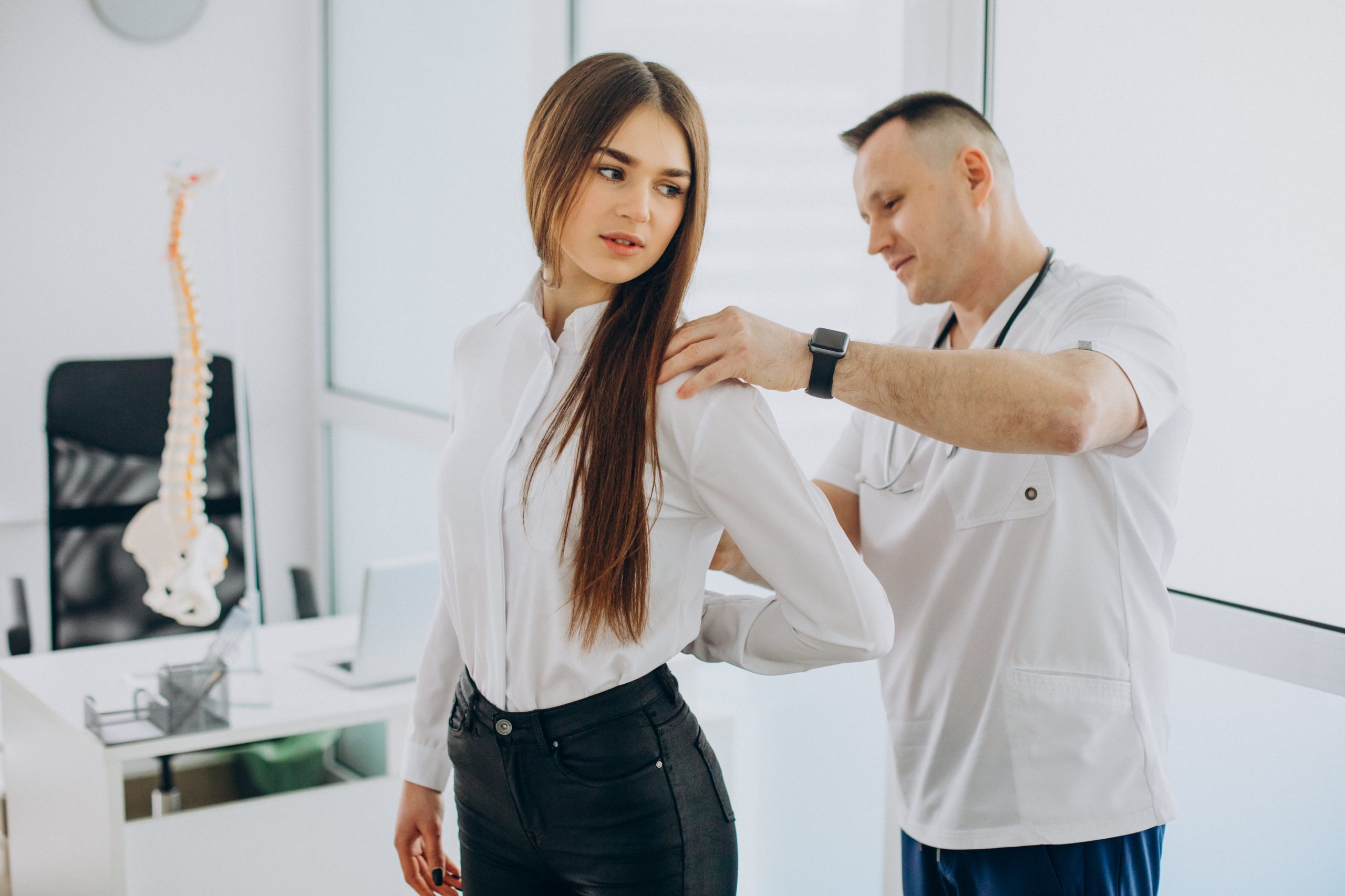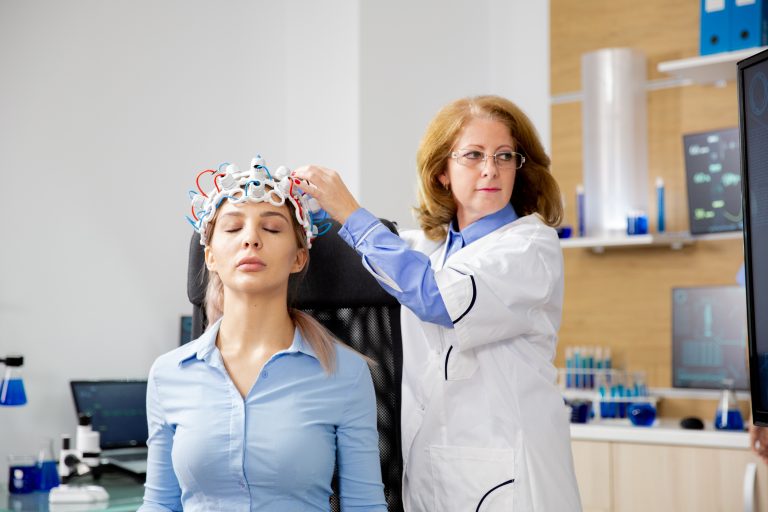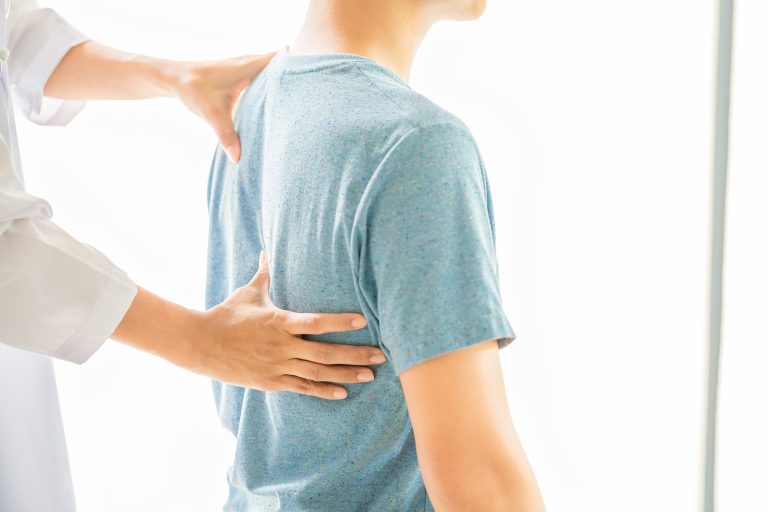Scoliosis is a condition characterized by an abnormal lateral curvature of the spine, which can lead to various physical and functional issues. Understanding the causes of scoliosis is essential for early detection, treatment, and management. At Spinal Recovery Center in Warren, Michigan, we provide comprehensive care for individuals with scoliosis, focusing on diagnosis, treatment, and support. This article delves into the different types of scoliosis, their causes, and the importance of early intervention.
What is Scoliosis?
Scoliosis is identified by an abnormal “S” or “C” shaped curve in the spine. The condition can range from mild to severe, with more pronounced curves potentially causing significant health problems.
Common symptoms of scoliosis include:
- Uneven shoulders or hips
- One shoulder blade that appears more prominent than the other
- Uneven waist
- Leaning to one side
Types of Scoliosis and Their Causes
- Idiopathic Scoliosis
Idiopathic scoliosis is the most common type, accounting for approximately 80% of all scoliosis cases. The exact cause of idiopathic scoliosis is unknown, but it is believed to be influenced by genetic and environmental factors.
Characteristics:
- Often develops during adolescence (adolescent idiopathic scoliosis)
- More common in girls than boys
- Can be detected through routine screenings in school or during physical exams
- Congenital Scoliosis
Congenital scoliosis occurs when the spine does not form correctly during fetal development, leading to structural abnormalities in the vertebrae.
Causes:
- Malformation of the vertebrae in utero
- Partial or incomplete formation of the vertebrae
- Fusion of the vertebrae
Characteristics:
- Often detected at birth or during early childhood
- May be associated with other congenital abnormalities
- Neuromuscular Scoliosis
Neuromuscular scoliosis is associated with neurological or muscular conditions that affect the muscles’ ability to support the spine.
Causes:
- Cerebral palsy
- Muscular dystrophy
- Spina bifida
- Spinal cord injuries
Characteristics:
- Typically progresses more rapidly than other forms of scoliosis
- May require more intensive treatment and management
- Degenerative Scoliosis
Degenerative scoliosis, also known as adult-onset scoliosis, occurs due to the degeneration of spinal structures, such as discs and joints, typically related to aging.
Causes:
- Degenerative disc disease
- Osteoarthritis
- Osteoporosis
Characteristics:
- More common in older adults
- May cause pain and functional limitations due to spinal degeneration
- Functional Scoliosis
Functional scoliosis occurs when an abnormal spinal curve develops due to a non-structural issue, such as a difference in leg length or muscle spasms.
Causes:
- Leg length discrepancy
- Muscle imbalances or spasms
- Inflammatory conditions
Characteristics:
- The spine itself is structurally normal
- The curve may resolve when the underlying cause is treated
Importance of Early Intervention
Early detection and intervention are crucial in managing scoliosis effectively. Early treatment can prevent the progression of the spinal curve and reduce the risk of complications.
Benefits of early intervention:
- Preventing Curve Progression: Early treatment can halt or slow the progression of the spinal curve, reducing the need for more invasive treatments.
- Improving Functionality: Treatment can improve posture, balance, and overall functionality, enhancing the quality of life.
- Reducing Pain: Addressing scoliosis early can alleviate pain and discomfort associated with the condition.
Diagnostic Methods for Scoliosis
Diagnosing scoliosis typically involves a combination of physical examinations and imaging tests.
Diagnostic methods:
- Physical Examination: Assessing the spine, shoulders, hips, and waist for signs of scoliosis.
- Adam’s Forward Bend Test: A screening tool where the patient bends forward, allowing the examiner to observe any spinal asymmetry.
- X-Rays: Imaging tests to confirm the diagnosis and determine the severity of the spinal curve.
- MRI or CT Scans: Advanced imaging tests to evaluate the spine’s structures and identify any underlying conditions.
Treatment Options for Scoliosis
The treatment of scoliosis depends on the type, severity, and progression of the spinal curve, as well as the patient’s age and overall health.
- Observation and Monitoring
For mild scoliosis, regular monitoring may be sufficient to ensure the condition does not worsen. This involves periodic physical exams and X-rays.
When it’s used:
- Mild curves that are not progressing
- Children who are still growing
- Bracing
Bracing is often recommended for adolescents with moderate scoliosis to prevent further progression of the spinal curve.
Types of braces:
- Thoracolumbosacral Orthosis (TLSO): A plastic brace that fits under the arms and around the rib cage, lower back, and hips.
- Milwaukee Brace: A full-torso brace with a neck ring and chin rest.
When it’s used:
- Moderate curves in growing children and adolescents
- Curves between 25 and 40 degrees
- Physical Therapy
Physical therapy can help strengthen the muscles supporting the spine, improve posture, and enhance overall functionality.
Physical therapy techniques:
- Strengthening Exercises: To build core and back muscles.
- Stretching Exercises: To improve flexibility and reduce muscle tension.
- Postural Training: To educate patients on maintaining proper posture.
- Chiropractic Care
Chiropractic care can provide non-invasive treatment options for scoliosis, focusing on spinal alignment and pain relief.
Chiropractic techniques:
- Spinal Adjustments: To improve spinal alignment and reduce discomfort.
- Soft Tissue Therapy: To relieve muscle tension and improve circulation.
- Rehabilitative Exercises: To support spinal health and functionality.
- Surgical Intervention
Surgery may be considered for severe scoliosis or cases where conservative treatments are ineffective.
Types of surgery:
- Spinal Fusion: Fusing the affected vertebrae to correct the curve and stabilize the spine.
- Vertebral Body Tethering: A less invasive option using flexible cords to straighten the spine.
When it’s used:
- Severe curves greater than 45 degrees
- Curves that are rapidly progressing despite bracing
Why Choose Spinal Recovery Center for Scoliosis Care?
At Spinal Recovery Center in Warren, Michigan, we are dedicated to providing comprehensive care for individuals with scoliosis. Our experienced team of chiropractors, physical therapists, and pain management specialists uses state-of-the-art techniques and personalized treatment plans to address each patient’s unique needs. We focus on early detection, effective treatment, and ongoing support to improve the quality of life for our patients.
For more information or to schedule a consultation, visit our website or call us directly. Let us help you understand and manage scoliosis for a healthier, more comfortable life.




